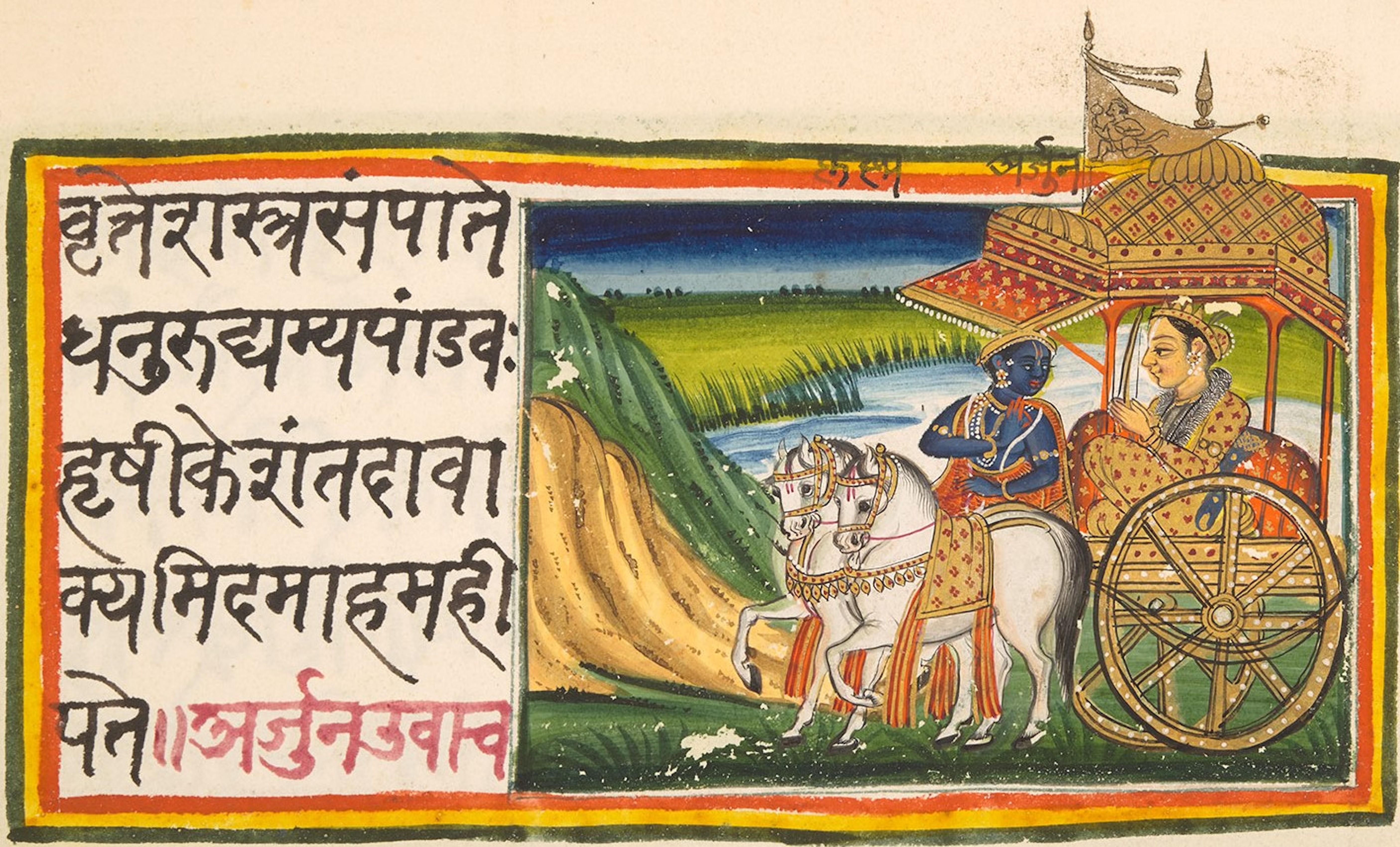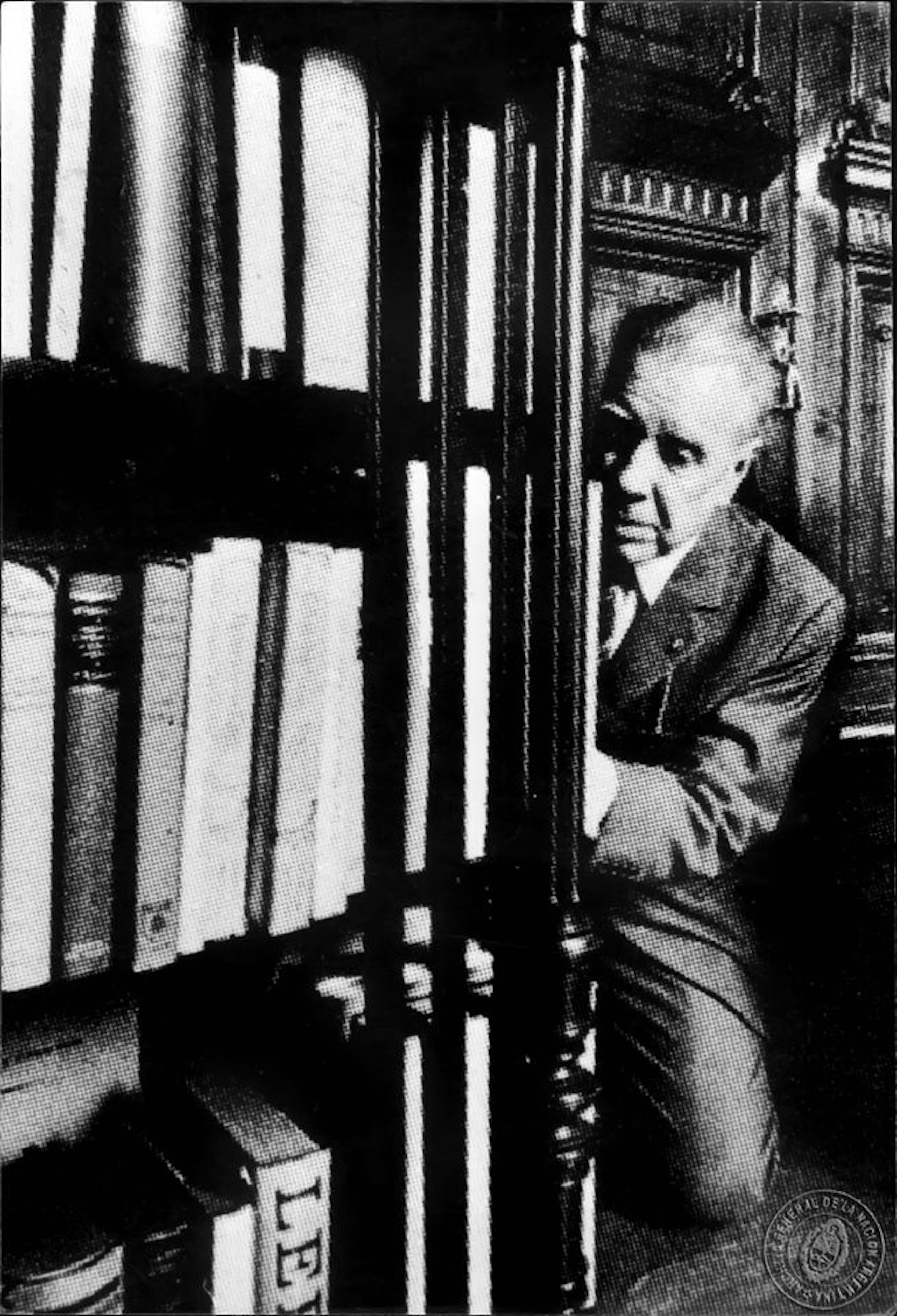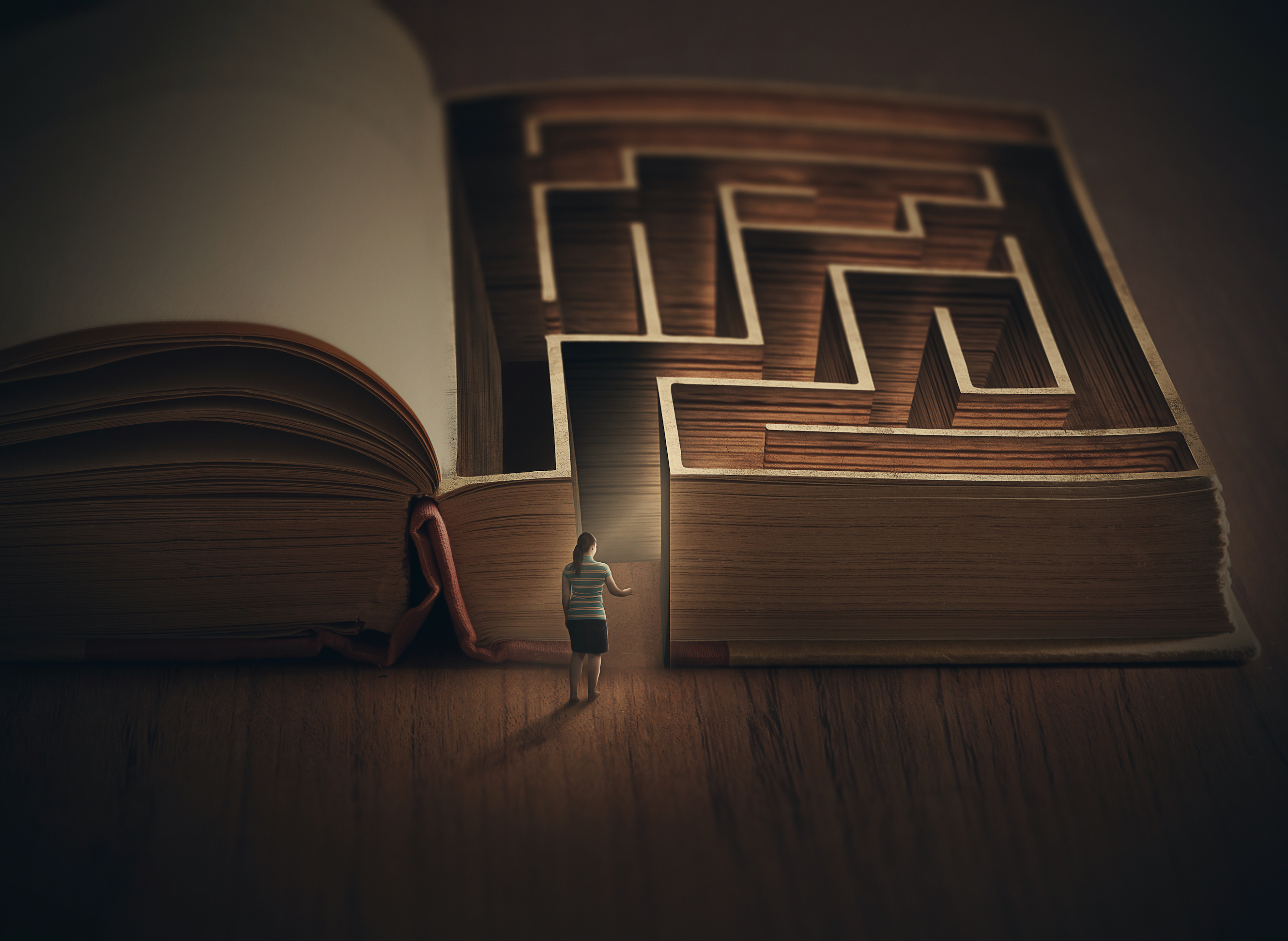If you want to be really strict and specific about what you mean by magical realism, you need to pay attention to a particular moment. In 1949, a new kind of writing starts to come into being on a scale and a level which is important enough to be taken as part of a movement. Three incredibly important texts of magical realism were published. The Guatemalan writer Miguel Ángel Asturias published a novel called Men of Maize. That same year, Alejo Carpentier, the Cuban writer, published a novel called The Kingdom of This World and the famous Argentinian writer Jorge Luis Borges published The Aleph.
A brief history of magical realism
Lecturer in African Literatures and Cultures
- In 1949, the genre of magical realism emerged as part of a movement. Three important texts were published: Men of Maize, The Kingdom of This World and The Aleph.
- There are two strands of magical realism: the first is characterised by its relationship with scepticism, by a playful element that serves as the basis of serious philosophical questions. The second is how the magical provides the grounds for thinking about an expanded sense of realism.
- In the 1970s and 1980s, Latin American writers started to move away from magical realism and anglophone writers started exploring the genre.
The origins
Magical realism is an enchanting and provocative term. It’s a term that people find extremely interesting and exhilarating, even. But it’s less common to find people who are quite sure they know what they mean when they use the term magical realism. Certainly, the two elements, magic and realism, can be found in texts, storytelling, traditions from around the world since time immemorial – the mythical traditions of the Americas or the Sanskrit religious writings of Asia or indeed the oral traditions of Africa. You’ll find elements of magic and elements of what we now call the “real” in all of these traditions and in all of these texts.

A 19th century illustrated manuscript of the Bhagawad Gita composed in Sanskrit ca 400 BC – 200 BC, Chapter 1, portions of verses 20, 21. Unknown artists. Wikimedia Commons. Public Domain.
Borges’ writing
Borges was an incredibly educated and erudite figure who had an encyclopaedic reading knowledge and was well versed in all kinds of traditions of European philosophy, particularly German idealism. He was very interested in the question of the relationship between material and immaterial, and in the sceptical philosophies of Hume and Berkeley. In his fictions, Borges was always keen to find ways to make you think differently about the nature of reality and the nature of truth, to call into question the assumptions behind your constructions of these ideas.
For example, he writes riddling fictions: texts which are based around riddles in which you, the reader, become a kind of detective, trying to decipher the clues that lead to the answer. But, of course, there is no answer. Over and over again, he’ll play intriguing games with time, space and with causalities that call into question your assumptions about what you call the real.
Carpentier’s writing
In some respects, Borges and Carpentier could not be further apart. Carpentier, at least the early Carpentier, was particularly concerned with exploring the Afro-Caribbean world view. His parents were French, but he grew up in Cuba and he told stories about how he used to roam the hills around his home and associate with Afro-Caribbean and Afro-Cuban children. He talks about his experiences of going to voodoo ceremonies. In his novel, The Kingdom of This World, he tries quite hard to explore what it’s like to have a magical world view in the manner of the Afro-Caribbean characters of his novel.
Two strands of magical realism
By extrapolating from those two different examples, one can start to theorise two different strands within magical realism. One can hypothesise that there may be two quite different uses for magical realism in 20th century literature. The first, drawing from Borges, is characterised by its relationship with scepticism, by a ludic element in which jokes and riddles provide the basis for a quite serious philosophical interrogation of the nature of reality itself.

Argentine writer Jorge Luis Borges photographed at the National Library. He directed the library from 1955 to 1973. Wikimedia Commons. Public Domain. By Sara Facio.
On the other hand, drawing from the early Carpentier, one can theorise that quite different strand of magical realism: one in which the magical and the real reinforce each other and, in fact, where the magical provides the grounds for thinking about an expanded sense of realism. So, realism isn’t so much called into question as expanded, and elements that might otherwise be left out are allowed to inhabit that realism.
A genre linked to particular cultures
There are many writers who’ve tried to claim that magical realism is embedded in their particular culture or their particular geographical location. This was a cornerstone of magical realist theory, from Carpentier’s 1949 novel onwards. Carpentier wrote a preface to The Kingdom of This World in which he said that the world where he came from, Cuba – but he extended that to other parts of Latin America as well – isn’t the same as Europe. He said it was a different kind of reality. Because of the extraordinary qualities of their forests, their mountains and their climates, and because of this incredible history of cultural and racial intermingling in Latin America, they have a different kind of reality from that which you find in Europe. He called it the marvellous real rather than magical real, but they’re quite similar, or at least, they overlap, in concept. This is one of the reasons, interestingly, why lots of magical realist writers hate the term magical realism, because for them it’s what they’re writing. At least this is what they want us to believe. What they’re writing is not, in fact, magical realism: it’s realism. It’s just a kind of expanded realism.
A particular kind of experience
The experience one has of reading a magical realist text is, quite often, a pleasurable bafflement. It’s unusual to be forced to confront something that you shouldn’t be confronting. In other words, it’s in creating a realistic environment, but then asking you as the reader to confront these supernatural apparitions that your very way of reading is being called into question. Some people find that frustrating. Some people find it exhilarating. I find it intriguing. I see it as a puzzle that needs to be cracked or a problem that needs to be solved.

Photo by Amanda Carzen
I’m particularly interested in focusing on what techniques are used to make that supernatural feel part of the natural and, more to the point, why that writer is using that particular technique. What’s in it for them? What’s at stake? What are they trying to convey? These are the kinds of questions I think magical realist texts are implicitly asking you to answer. For that reason, I think it is an unusual experience of reading by comparison with some other genres, for example.
Anglophone magical realism
There’s a strange irony in that the Latin American writers started to move away from magical realism and started to reject it at the exact time at which anglophone postcolonial writers, in particular, were starting to explore it. In the late 1970s, early 1980s, writers like Ben Okri, Salman Rushdie and Angela Carter were starting to use the very techniques that were now being rejected in Latin America.
This can be relatively easily explained by some of the lag in transmission between the famous Latin American novels, for example One Hundred Years of Solitude and others, that it takes a while for them to be translated and then disseminated into the anglophone world.
Yet, I think the more interesting answer to the question of why magical realism gradually starts to appear in anglophone writing of the 1980s is because of what it makes available to those writers. Those writers found magical realism to be an incredibly powerful tool for negotiating some of the cultural, political, literary, historical issues that they wanted to explore and to deal with in their texts.
The most controversial magical realist
Probably the best known, the most controversial magical realist in existence is Salman Rushdie. Rushdie’s fictions from the 1980s explore a range of very important issues in relation to not just South Asia, India and Pakistan, in particular, but also to Britain and to the experience of diasporic people – to immigrants in Britain at the time. His first novel which uses magical realism in a detailed way is Midnight’s Children.
Midnight’s Children focuses on Indian history – it is said that Rushdie wrote the novel with a copy of Indian History in front of him. His idea was to engage with that history and to effectively rewrite it in such a way as to really take cognisance of the plurality of histories that existed in India and the absolute multitude of experiences of Indian people throughout the period of the novel.
He uses magical realism in Midnight’s Children in a variety of ways, but the most pertinent is the idea of the nation as a person: if India were a person, what kind of person would it be? Of course, it can’t be one person; it has to be many people. But each of the children in Midnight’s Children explores a different aspect of Indian history, and the magical realism is what enables those histories to cohere in such a way as to help us to make better sense of the history of India in the 20th century than a conventional book of history would allow.
The Satanic Verses
The Satanic Verses has many different elements to it. The magical realism is particularly noticeable in the London sections of that novel, where he explores the condition of immigrant communities, particularly in the Brixton area, in the 1980s, when there was a great deal of social unrest, violence and tension between the police and those communities. This is the milieu in which Rushdie situates his magical realism.
He takes two aspects of racist language and he literalises them to explore their consequences for oppressed immigrants in South London. The first is the idea of the devil and diabolism. It is actually a fairly common element of racist language to associate the other with something diabolical or something evil. Rushdie takes that idea and literalises it by having one of his main characters turn into an almost satanic figure.
The second aspect of racist language that Rushdie explores is the idea of the animal, and associations between people and animals. This is a cornerstone of the discourse of racism that you’ll find repeated over and over in different parts of the world. Racist language typically makes use of animal imagery or animal comparisons. Rushdie takes that idea and says, ‘Okay, this is what you call us. Then let’s really take that idea and run with it.’ So, he has his main character, Saladin Chamcha, turn into a goat man – a sulphur-breathing, devilish goat man – while he’s staying in a bed and breakfast in South London.
Discover more about
magical realism
Warnes, C. (2009). Magical Realism and the Postcolonial Novel: Between Faith and Irreverence. Palgrave Macmillan.
Warnes, C. (2009). Chronicles of Belief and Unbelief: Zakes Mda and the Question of Magical Realism in South African Literature. In D. Bell & J. Jacobs (Eds.), Ways of Writing: Critical Essays on Zakes Mda (pp. 73–90). University of KwaZulu-Natal Press.